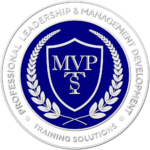Attention Management is a topic that’s been on the minds of managers and employees alike for years.
But what exactly is it?
Attention management understands how your employees get their work done and helps them manage their attention to perform at their best.
It’s important to understand that attention management is about more than just ensuring the focus of your employees on the right tasks at the right time. It’s also about ensuring they have the energy and clarity to focus on those tasks. That means you need to consider your employee’s needs—from physical to mental health.
As a manager, it’s your responsibility to ensure you’re providing enough support for your employees so that they can take care of themselves and their jobs.
Attention Management Strategies:
You’re a manager. You have a lot on your plate and must communicate with many employees daily. How can you do this effectively? There are several strategies you can use to achieve effective communication with your employees.
The first is to set aside time for them. You may not be able to do this every day, but try setting aside some time during the week to sit down and talk to the people who report directly to you. This ensures that they feel heard and know what’s going on in the company.
It’s also important to listen to what your employees say—and that means more than just hearing them out when they come into your office for their weekly meeting. It means making sure that there are no barriers between us so that we can truly understand one another’s needs and concerns; this will help us succeed together!
1. Don’t Interrupt Them
Do you know how people can get defensive when they feel someone is cutting them off? Well, imagine if you were talking about your favorite childhood memory—and then your boss started talking over YOU. That would be pretty annoying, wouldn’t it? So don’t interrupt them when they’re speaking!
2. Keep It Short and Sweet
No one wants to listen to a lecture on what they should be doing at work—especially when it’s coming from the boss man or woman.
This isn’t high school; no one wants to sit through an hour-long lecture every time before they start their shift or after lunch break or whatever else. Ensure your instructions are as brief as possible so everyone can return to work quickly!
3. Give them Clear Objectives and Expectations
Your team members need to know about the expectations of their managers from day one. So make sure you set clear goals for them (and check in regularly with them about whether or not they are completing them).
4. Clear the Responsibilities
Make sure everyone knows who’s responsible for what. If there is any confusion about who’s responsible for what tasks, this will lead to miscommunication and frustration among employees trying to figure out where they fit in the grand scheme of things!
